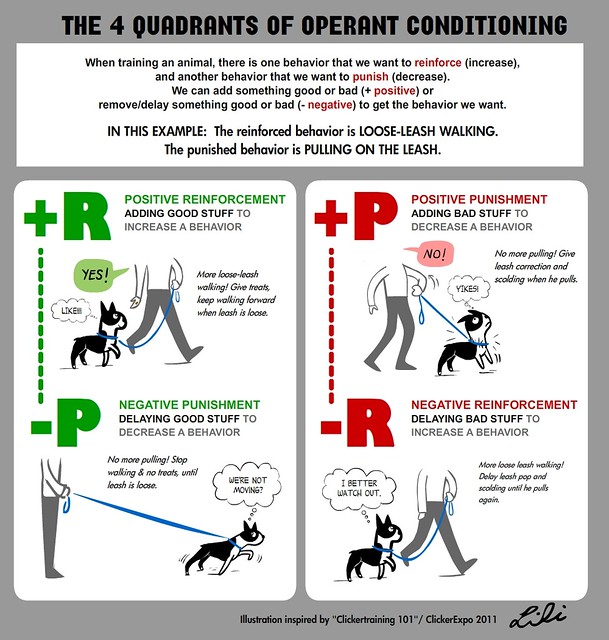Anyone who knows me very well knows that I am crazy about Letty, my retriever mix. I was crazy about her the day I adopted her, and I am still crazy about her now, more than two years since she passed away. Though she is no longer a daily, physical presence in my life, not a day goes by that I don’t think about her or remember her in some way, usually many times each day. She also lives on, of course, as part of the inspiration for the title of this blog. As I explained in my second entry on this blog, my two dogs inspired the title because “I realized that the tasks their breeds excel in are also analogous to the sort of work I do for a living as a researcher and data analyst.”
Since March is #ResearchPride month, I thought this was as good a time as any to elaborate on some of the many lessons Letty taught through her example that have relevance to those of us working in the field of prospect development (and, frankly, many other fields, as well).
First, a bit of background about Letty: I adopted her from the Nevada Humane Society when she was approximately a year old. She was definitely a retriever mix, but whether that meant she was part Golden Retriever, part Labrador Retriever, or a mix of the two, I will never know for sure. I will also never know what she was mixed with, though this was always a topic of speculation and discussion among those who met her or who saw her. The dominant theory was that she was mixed with some sort of wirehaired breed–German Wirehaired Pointer, Wirehaired Pointing Griffon or Wirehaired Viszla–or with some sort of terrier, possibly Airedale. Among other theories I’ve heard was that she could be a first generation Labradoodle, that she could have been part Irish Wolfhound, or Italian Spinone, and though she didn’t bear a physical resemblance to the breed, something about her eyes also reminded me a little bit of German Shepherds I have known.
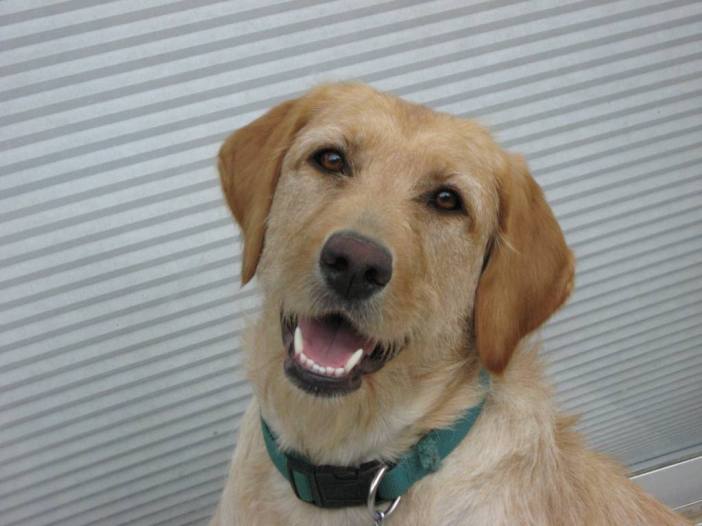
In some sense it didn’t matter because everyone saw something a little different in her. She was sort of an “every” dog to whom many people could relate. Her coloring was a beautiful mix of golden and cream, she had a medium-length wiry coat, and a slightly scruffy looking face with a cute beard under her chin. Her most striking feature was her intensely thoughtful, lively and spirited eyes that communicated both her zest for life and her intelligence.
So what were some of the things that Letty knew?
1). There is joy in retrieving. Appreciate your treasures wherever and whenever you find them.
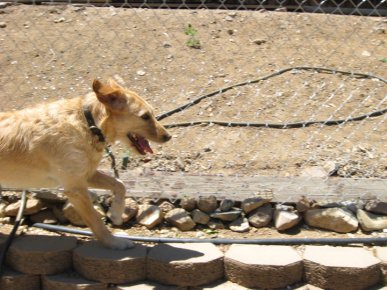
Like most retrievers, Letty loved fetching things (if she couldn’t catch them first), and she also loved carrying them around. Some of her favorite toys were her stuffed birds. Over the years, she had many different ducks, pheasants, geese, and even some roosters, not to mention squirrels, teddy bears, and even a cow and an alligator. She got excited retrieving them, but she also enjoyed grabbing one or two to take downstairs with her every morning, napping near them during the day, or cuddling with them at night.
So how does this relate to research? As implied by my blog’s name, research is largely the art of finding and retrieving information. That often calls for a lot of creativity and effort, but sometimes it is just a matter of knowing where to look to find something quickly. Either way, there is much satisfaction to be found in finding the answers to many kinds of questions.
2). Hang out where you’ll find the good stuff.
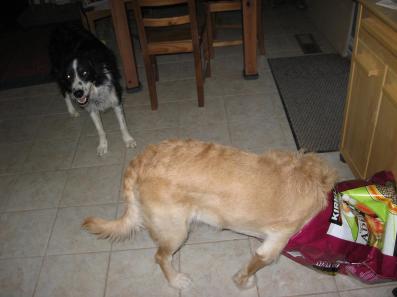
When I was working in the kitchen, Letty was often sitting or lying nearby. She knew that was where the food was, and if I was chopping or cooking something, she knew that eventually I might drop something that she could eat, or if she looked at me the right way, she might be able to persuade me to give her some bits to snack on.
In time, Letty became even more observant about my kitchen rituals. She noticed that I often left yogurt containers near the sink in the morning after breakfast, so I could clean them out for recycling or reuse for other purposes. And even though she knew she wasn’t supposed to “counter-surf,” she recognized that after I put the containers there, I would often walk down the hall to brush my teeth or go about some other part of my morning routine. She figured out that she could go partway down the hall with me, but then she could turn around and go back to the kitchen to grab the yogurt container off of the counter and enjoy any remnants of yogurt left in the container. The first time or two this happened, I was puzzled as to how the yogurt containers ended up on the floor in the kitchen, but then I noticed some bits of yogurt on the fur on her face and figured out what she was doing. One day, I walked quietly back towards the kitchen and caught her nabbing the yogurt container from the counter. I started just giving her the yogurt containers after I was done with them.
And research? As experienced researchers and data analysts know, much of research is done incrementally through observation, recording information, and data tracking. Some days seem very slow, and only over time do we realize how much information we’ve gathered and how useful it is when we put it all together.
3). Problem solving is always important (or don’t be afraid to move things around).
Some of my favorite stories about Letty come from my first year with her. I had a dog door installed in the garage, and for the first few months, she was free to roam around the garage during the days and to go out the dog door into the yard. During those days, I was often surprised by what I came home to find. One time I had a bag of magazines and catalogs in the garage that I intended to put out with the recycling and Letty found it. I came home that afternoon to discover that Letty had been reviewing magazines and catalogs all day, as they were strewn all over the deck and yard in the back of the house. There was also an old part of a rug in the garage that I used for a mat near the door. On several occasions I returned home to find that Letty had moved it to the deck, as well. Clearly she didn’t like it placed where I thought it belonged.
By far the most remarkable instance of problem solving, though, was the day I returned home to find a broom on the deck. How she figured out how to pull a broom through the dog door, I will never know. It may have taken her a lot of effort, and perhaps she spent much of the day thinking about it, but she was such a clever pup, that it’s equally possible she could have come up with a workable approach in short order.

As researchers, we need to recognize that problem-solving often requires moving things around and looking at things from different angles. Some tasks may seem insurmountable when we first conceive of them, but we can eventually find the answers by breaking them down into different components and testing out various theories as we go. As Letty clearly demonstrated, a broom can be pulled through a dog door if you can figure out the right way to do it.
4). Learning new things can be lots of fun.
A few years ago I wrote a post about what I learned about operant conditioning after I adopted my dogs. Although I didn’t say so in the post, much of what I learned came about as a result of my frustration with traditional dog training classes. I started Letty in a traditional dog obedience class offered by the city department of parks and recreation. She made decent progress there, but I kept looking around for other alternatives. Once I started to read about clicker training and tried it with Letty, I was amazed to see how well she responded and how much fun she had in the process of learning new tricks and skills. As soon as she saw me get out the clicker, she’d become excited and start offering up all sorts of tricks and skills she had already learned in the hope of getting more treats. When I would try to get her to do new things, I always cherished the exuberance of her approach.
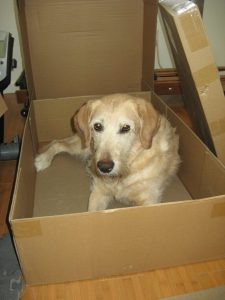
The field of prospect development is very different now than it was when I started out many years ago. Over my career, I’ve benefited from the many conferences I’ve attended and connections I’ve made as a result, but these days there are many more avenues available for learning new things and developing one’s skills. While one can look to the many offerings available through APRA, one hardly needs to stop there. These days there are more and more books being published about different elements of prospect development, there are online platforms for learning about the field, and there are all sorts of other classes and workshops offered, many at little or no cost that can help people learn topics ranging from advanced statistical analysis to how to operate a key piece of software.
5). Be observant and you may understand what people want without them explaining.
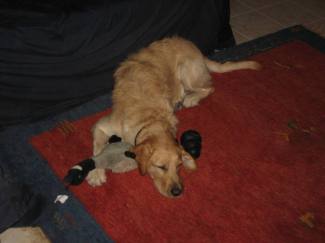
Letty always loved playing with her Kong toys. I would jam treats in the Kongs tightly, and, being the excellent problem-solver she was, she would always focus and persist enough to figure out how to get them out. I would give her a Kong when I left the house, and I would pick it up to clean off and get ready for the next day when I got home.
One day, though, I returned home and couldn’t find the Kong in one of its usual spots. Letty had only been living with me a few months at that point, and although I talked about the Kong, I figured it probably just sounded like so much blather and nonsense chatter to her. I looked around for a while and asked, more or less rhetorically, “Where is the Kong?” when, much to my amazement, Letty ran outside and retrieved it from where she had left it, just under the deck.
The longer one works in the field of prospect development, the more one can recognize what sorts of information may be most useful, whether people ask just ask rhetorically, or sometimes even if they don’t know what to ask for. We can ask questions to guide them, we can suggest possibilities, and sometimes we know just what sort of information will provide the answers to the questions that they’ve only just begun to formulate.

In closing, here’s a question for discussion: what life or work lessons have you learned from your pets?






